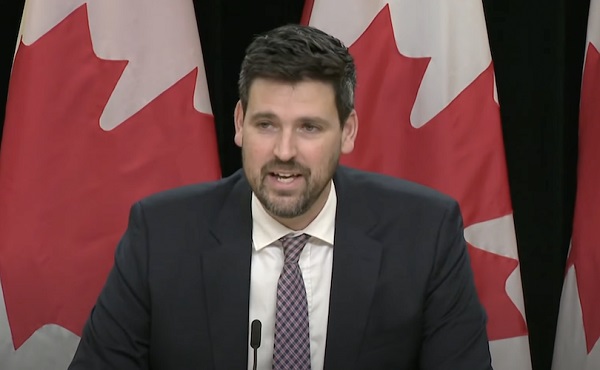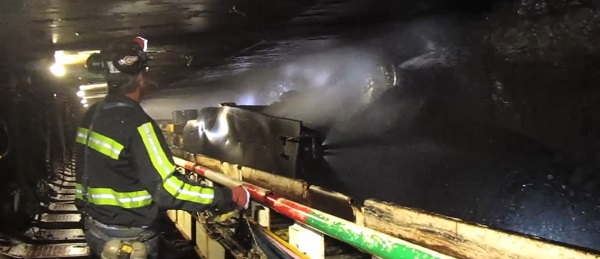Alberta
Province encouraging Alberta Doctors to see more patients by lifting daily cap

Improving Albertans’ access to doctors
To help increase patient access to physicians, there will no longer be a daily cap on the number of visits a physician can fully bill.
During the negotiations with the Alberta Medical Association (AMA), Alberta’s government heard that Alberta’s doctors could safely see more patients than the current cap allowed.
Albertans want to know that they can see a doctor when they need one, and physicians want to be able to provide Albertans with the health-care services they need. By changing the daily cap policy, some of the immediate pressures for services provided by general practitioners and specialists, including pediatricians and ophthalmologists, will be addressed. By lifting the cap, physicians will be fully compensated for every visit rather than receiving a discounted rate if they provide more than 50 visit services in one day, which is the current practice.
“We’re moving forward to implement the new agreement, starting with ending the daily visit services cap policy and working to put rate increases in place. We’ve heard from some physicians that the daily visit cap was having a negative impact on patient access, so this change addresses those concerns. It is also part of the new agreement with the AMA where we are listening to physicians and working with them as partners moving forward.”
“The AMA agreement allows physicians and government to work together on challenges facing patients and physicians in the health-care system. This early step to remove the services cap is an important example that will allow more physicians to care for more patients while helping to stabilize physician practices.”
Lump sum payment
The agreement between the AMA and the province also includes a one per cent rate increase in each of the next three years and a one per cent recognition lump sum payment in 2022-23.
Alberta physicians were at the forefront of the pandemic and the one-time payment for eligible practising physicians is in recognition of that work during the 2021-22 fiscal year. This lump sum payment is approximately $45 million and will go to the AMA to distribute to their members by the end of 2022.
In addition to the lump sum payment, the government is working with the AMA to implement the one per cent rate increase for 2022-23. The increase applies to fee-for-service and alternative relationship plan rates, providing an additional $46 million to physicians.
As outlined in the AMA agreement, the rate increase is heavily weighted to specialties facing the greatest pressures, such as family medicine. Alberta’s government and the AMA are working together to distribute these increases across and within specialties. Increases will be effective April 1, 2022, and are expected to be finalized by March 31, 2023.
Quick facts
- The daily visit services cap policy was introduced as part of the Physician Funding Framework in 2020.
- The intent of the policy was to support quality patient care by reducing physician burnout while addressing fiscal constraint for the province.
- It applies to all physician services that are defined in the Schedule of Medical Benefits (SOMB) as “visits” with a “V” category code that physicians provide to patients in person, including physician office visits, consultations and counselling services. Procedures and tests that physicians provide are not billed as visits.
- Under the current policy, physicians are compensated 100 per cent for up to 50 visit services billings in a day, 50 per cent for between 51 and 65 visit services, and there is no compensation for visit services billings greater than 66.
- Physicians working in rural and remote areas, hospital visits and virtual care are exempt from the current policy.
- The policy change (to lift the cap) aligns Alberta with most other jurisdictions.
- Alberta Health is working on updating the SOMB and billing system to operationalize this change. A Medical Bulletin and a new SOMB will be posted when information technology changes are complete.
- The daily visit services cap policy change will be reviewed and its impacts assessed before determining the future policy beyond the current fiscal year.
Alberta
Fraser Institute: Time to fix health care in Alberta

From the Fraser Institute
By Bacchus Barua and Tegan Hill
Shortly after Danielle Smith was sworn in as premier, she warned Albertans that it would “be a bit bumpy for the next 90 days” on the road to health-care reform. Now, more than two years into her premiership, the province’s health-care system remains in shambles.
According to a new report, this year patients in Alberta faced a median wait of 38.4 weeks between seeing a general practitioner and receiving medically necessary treatment. That’s more than eight weeks longer than the Canadian average (30.0 weeks) and more than triple the 10.5 weeks Albertans waited in 1993 when the Fraser Institute first published nationwide estimates.
In fact, since Premier Smith took office in 2022, wait times have actually increased 15.3 per cent.
To be fair, Premier Smith has made good on her commitment to expand collaboration with the private sector for the delivery of some public surgeries, and focused spending in critical areas such as emergency services and increased staffing. She also divided Alberta Health Services, arguing it currently operates as a monopoly and monopolies don’t face the consequences when delivering poor service.
While the impact of these reforms remain largely unknown, one thing is clear: the province requires immediate and bold health-care reforms based on proven lessons from other countries (e.g. Australia and the Netherlands) and other provinces (e.g. Saskatchewan and Quebec).
These reforms include a rapid expansion of contracts with private clinics to deliver more publicly funded services. The premier should also consider a central referral system to connect patients to physicians with the shortest wait time in their area in public or private clinics (while patients retain the right to wait longer for the physician of their choice). This could be integrated into the province’s Connect Care system for electronic patient records.
Saskatchewan did just this in the early 2010s and moved from the longest wait times in Canada to the second shortest in just four years. (Since then, wait times have crept back up with little to no expansion in the contracts with private clinics, which was so successful in the past. This highlights a key lesson for Alberta—these reforms are only a first step.)
Premier Smith should also change the way hospitals are paid to encourage more care and a more patient-focused approach. Why?
Because Alberta still generally follows an outdated approach to hospital funding where hospitals receive a pre-set budget annually. As a result, patients are seen as “costs” that eat into the hospital budget, and hospitals are not financially incentivized to treat more patients or provide more rapid access to care (in fact, doing so drains the budget more rapidly). By contrast, more successful universal health-care countries around the world pay hospitals for the services they provide. In other words, by making treatment the source of hospital revenue, hospitals provide more care more rapidly to patients and improve the quality of services overall. Quebec is already moving in this direction, with other provinces also experimenting.
The promise of a “new day” for health care in Alberta is increasingly looking like a pipe dream, but there’s still time to meaningfully improve health care for Albertans. To finally provide relief for patients and their families, Premier Smith should increase private-sector collaboration, create a central referral system, and change the way hospitals are funded.
Alberta
Your towing rights! AMA unveils measures to help fight predatory towing

From the Alberta Motor Association
Know Before the Tow: Towing Rights in Alberta
Predatory towing is a growing concern in major cities across the province. The Alberta Motor
Association (AMA), in partnership with the Calgary Police Service and Calgary Fire Department,
wants to ensure Albertans are not only aware of this emerging issue but also know how to stop
it.
Today, AMA launches Know Before the Tow—a new, provincewide awareness campaign that
empowers Albertans with the knowledge needed to stay confident and in control when faced with
a tow scam. The campaign features a list of five key towing rights that every Alberta driver should
know:
1. You have the right to refuse unsolicited towing services.
2. You have the right to choose who tows your vehicle, and where, unless
otherwise directed by police.
3. You have the right to access your vehicle to retrieve personal items during a
storage facility’s business hours.
4. You have the right to ask if the towing company receives a kickback for taking
your vehicle to a particular storage facility or repair shop.
5. You have the right to a quote prior to service, and an itemized invoice prior to
making payment.
“Being in a collision or broken down at the roadside is stressful enough; the last thing any Albertan
needs is high pressure from an unscrupulous tower,” says Jeff Kasbrick, Vice-President,
Advocacy and Operations, AMA. “These towing rights are clear and remind every Albertan that
they’re in the driver’s seat when it comes to who they choose to tow their vehicle.”
Edmonton and Calgary in particular are seeing increasing reports of predatory towing. Unethical
operators will arrive at a collision or breakdown scene uninvited, create a false sense of urgency
to remove the vehicle, and ultimately leave drivers facing huge fees.
Starting today, Albertans can visit ama.ab.ca/KnowBeforeTheTow to download a digital copy of
their towing rights, helping them feel confident if faced with a tow scam. And soon, all AMA centres
will offer free print versions, which are small enough to tuck in a glovebox.
“Alberta’s towing industry is still highly reputable, with the vast majority of operators committed
to fair and professional service. In fact, AMA and our roadside assistance network is proud to
represent 80% of all private-passenger tows in the province, so our members can be confident
that we’ll always protect them—just as we have for nearly 100 years,” says Kasbrick.
“By knowing your rights and choosing trusted providers like AMA, you can avoid unnecessary
stress, costs, and uncertainty. Because the road to recovery after a collision shouldn’t have to
include fighting for your vehicle.”
Sergeant Brad Norman, Calgary Police Service Traffic Section, says law enforcement continues
to work diligently with first responders and community partners like AMA to put the brakes on
predatory towers, who “are showing up at collision sites and pressuring overwhelmed and
frightened victims into paying high towing rates.”
“Our priority is to ensure the safety of collision victims, the public, and first responders at
collision sites. Part of this effort is educating motorists about their rights so that they Know
Before the Tow that they can say no to unsolicited towing services and choose a reputable
tower of their choice instead,” says Norman. “No one deserves to be taken advantage of after
being involved in a collision.”
To learn more, and to view an expanded version of Alberta towing rights, visit
ama.ab.ca/KnowBeforeTheTow
-

 Alberta2 days ago
Alberta2 days agoYour towing rights! AMA unveils measures to help fight predatory towing
-

 illegal immigration2 days ago
illegal immigration2 days agoDelusional Rumour Driving Some Migrants in Mexico to Reach US Border
-

 conflict1 day ago
conflict1 day agoTrump has started negotiations to end the war in Ukraine
-

 Economy1 day ago
Economy1 day agoThe White Pill: Big Government Can Be Defeated (Just Ask the Soviet Union)
-

 Business1 day ago
Business1 day agoFiscal update reveals extent of federal government mismanagement
-

 Housing1 day ago
Housing1 day agoTrudeau loses another cabinet member as Housing Minister Sean Fraser resigns
-

 Energy2 days ago
Energy2 days agoDig, Baby, Dig: Making Coal Great Again. A Convincing Case for Coal
-

 Alberta2 days ago
Alberta2 days agoB.C. traveller arrested for drug exportation during Calgary layover








